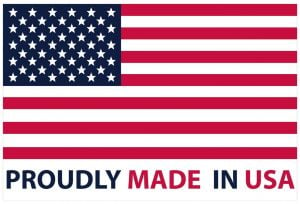When to Use Long-Form Content vs. Short-Form Content
There is no universal rule when it comes to the length of your content.
Long-form content and short-form content are both essential digital marketing tools. Though it has long been a topic of debate, one isn’t better than the other. However, there are certain situations where one will work better than the other, given the purpose of the content.
Long-Form Content
Long-form content is typically 1,200 words or more. It is standard practice to choose a long-form format when you are covering an educational topic that requires an in-depth explanation or analysis. Long-form content is also an ideal format for “evergreen” topics that will remain relevant to your customers over time. Types of long-form content include:
When should you to use long-form content? Long-form content is best suited to the early stages of your sales funnel, or the early stages of the buyer’s journey, when your target customer’s awareness of your business is low. With little awareness of your products or services, these customers need more comprehensive materials to learn about your brand and offerings.
Long-form content is also generally used in complex business-to-business sales, technical product markets, and high-end product or service markets because they need more detailed explanations. High-end product brands, in particular, require more copy to pitch their audience and convince them that their products or services are worth the higher price mark.
Short-Form Content
Short-form content is typically less than 1,200 words. It is well-loved because it is easy to consume and mobile-friendly. This type of content is useful when you cover seasonal topics that do not need extensive copy, when you want to convey a single idea, or when you create product and service pages where copy isn’t the main focus. Types of short-form content include.
When should you use short-form content? Short-form has the most impact when your customers are already familiar with your brand and trust your products or services. Also, commonly-used products or services don’t require long-form copy explanations to “sell” them since people already see them essential. Additionally, there are several digital marketing tools that require short-form copy, such as PPC ads, lists, social media posts, or email copy.
Which is Better for SEO?
Is long-form content or short-form content better for SEO? This question has long been up for debate. The short answer is: technically no, neither content form is better than the other for SEO efforts. Google Search Advocate John Mueller has explicitly stated that word count is not a ranking factor and that word count is not used to evaluate content quality. What search engines like Google care about the most is satisfying the user.
However, based on studies, it appears long-form content often outperforms short-form content in search rankings. Why? Most likely, it is because long-form content has the most space to properly answer user queries and optimize for keyword searches. On average, people stay longer on long-form content, indicating that the content was high quality and useful to them. This is likely the reason why people thought word count had a direct impact on ranking.
Keep in mind: this doesn’t mean that short-form content cannot be equally useful. Both long-form and short-form content have their place in every successful content strategy.
So How Do You Choose?
How do you know which content form to use? Ask these questions to help you find the best copy length.
Knowing who you are writing for is the most important consideration when creating content. Who are they and what are they looking for? What are their interests and pain points? How do they like to consume information? It’s important to distinguish if your typical customer prefers a how-to video instead of a 2,000 word guide, or vice versa, before going all in on your content creation. In addition, identifying topics of high-interest will also show your business where word count matters the most.
What stage of the buyer’s journey are they in?
Where are they in your sales funnel? Knowing where a customer is at in their buyer’s journey with your business will help you understand what kind of information they are looking for and how much. For example, new customers will want as much information as possible about your offerings, the problems you solve, and how you fare against competition, whereas loyal customers may only seek short-form news announcements, such as product launches or upcoming sales.
Read Creating Content for Every Stage of the Buyer’s Journey or Resources That Optimize Your Website to the Buyer’s Journey next!
Is your topic evergreen or seasonal?
Is your topic an informative one that will stay relevant over time or a seasonal one that is short-lived before becoming irrelevant? Businesses tend to use long-form content for more “timeless” topics that will always remain important to their customers.
What is your business’s goal for the content?
Why are you creating this content in the first place? What is the content’s purpose? Is it to entertain, educate, inform, inspire, or convert? When you identify your goals for the content, you will know what content length will work best. For example, if your goal is to entertain a follower on social media, you may opt for something short and sweet. On the other hand, if your goal is to build authority on a subject, you will want to a long-form format to cover as much information as possible.
Is your content meeting the needs of your audience and building your business? Contact Sun Sign Designs to discuss your content strategy and content creation today.







Leave a Reply
Want to join the discussion?Feel free to contribute!